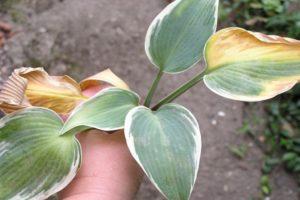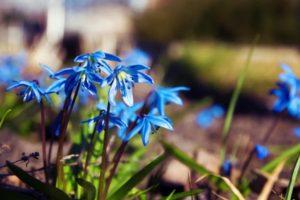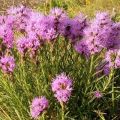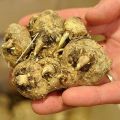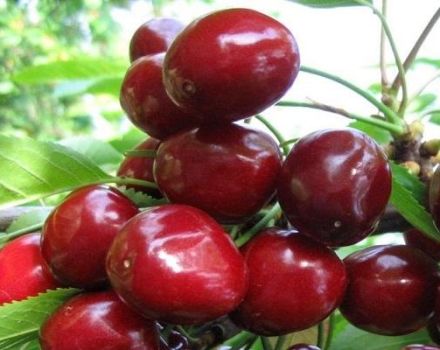Planting, growing and caring for Liatris in the open field
When growing liatris, planting and care in the open field matters. To grow a strong and viable plant, it is recommended to choose the right timing for planting the crop and prepare the soil in the garden. Systematic watering and the introduction of the necessary fertilizers are of no small importance. As a result, you can get a beautiful and flowering plant, which will become a real flower bed decoration.
Features of Liatris
Liatris, or Liatris, is a member of the Asteraceae family. Its height can be from 50 centimeters to 2 meters - it all depends on the type of culture.
Liatris serves as a real decoration for alpine slides and mixborders. The culture is also planted in separate flower beds. The plant has candle-shaped inflorescences that can be cut to form beautiful bouquets..
Types and varieties of culture
There are several popular plant species, each of which has certain characteristics.
Spikelet or spikelet liatris is very popular. This species is also called Liatris spicata. In height, it reaches 80 centimeters. Its stems are densely covered with leaves, and the inflorescences can have different shades:
- Spikata - differs in lilac-purple flowers, and the length of the peduncle is about 35 centimeters;
- Kobold - has lilac-pink inflorescences and reaches 40 centimeters in height;
- Flamingo - pink flowers;
- Bengal fire - has purple-red flowers and reaches a height of 35 centimeters;
- Picador - has pink flowers and has a height of 60 centimeters.
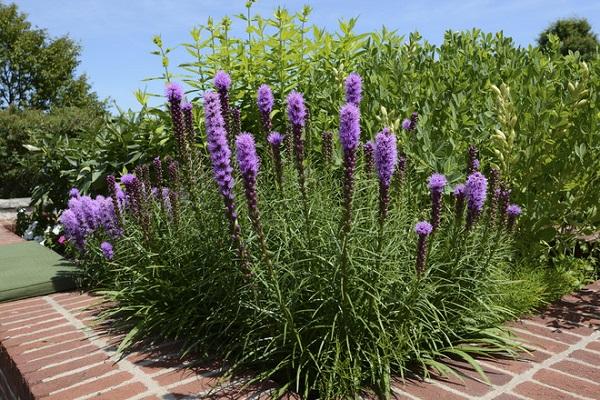
Another popular species is the scarlet liatris. It is characterized by wide leaves. The bush reaches 1 meter in height. This type includes the following varieties:
- Alba - has white inflorescences;
- September glory is considered a tall variety with rich pink flowers.
Rough Liatris is the tallest specimen of this family. It grows up to 2 meters. The plant has small purple flowers. Fluffy panicles are formed from them.
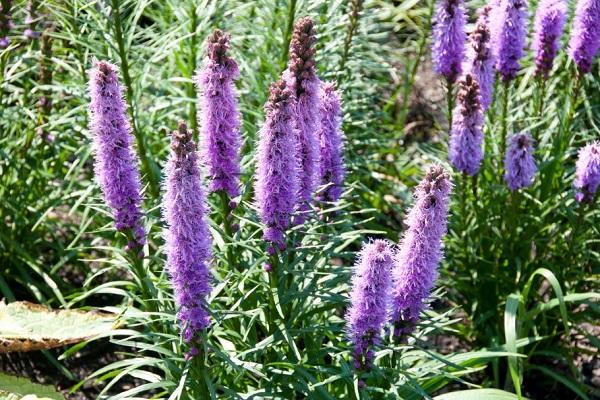
The specifics of growing a bush
To get a strong and viable plant, it should be properly planted. For this, it is recommended to follow some rules.
What time to plant
Planting time depends on the breeding technique. The seed is usually planted in a greenhouse or directly into open soil. This is recommended at the end of March. You can also perform the procedure in the first half of April. When the seedlings come up, they are raised until mid-autumn.Then it is recommended to dig up the tubers and store them for the winter directly from the ground. In mid-spring, the culture is planted on the site.
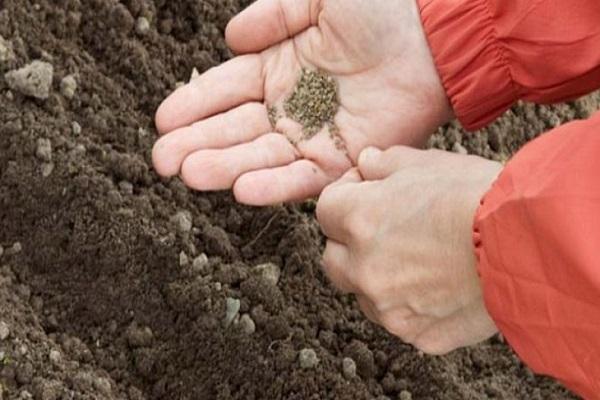
Landing place
The culture loves sunny, lighted areas. If you plant a lyatrice in a shady place, it will grow poorly, and may even die.
The composition of the soil is of no small importance. It must have sufficient looseness. You should not plant a crop in places where groundwater is localized. It is also recommended to avoid clay soils - they are too heavy for the plant. In low places, the culture will develop too slowly.
It should be borne in mind that the plant can get wet during the melting snow. To avoid such consequences, the crop is planted on a hill that has well-drained soil. In this case, melt water should be removed from the site.

How to plant in open ground
Tubers can be deepened by 3-10 centimeters - it all depends on the variety. A distance of 15-20 centimeters is left between the plants. After that, the breast should be watered and mulched with humus.
Recommendations for the care of Liatrix
For a crop to be successful, it needs to be well cared for. For this, it is recommended to follow certain rules.
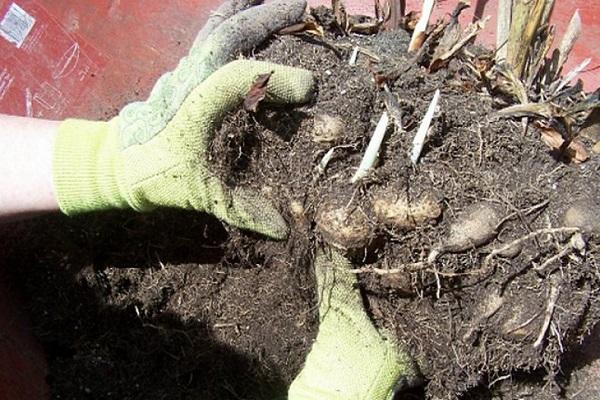
Watering and feeding
Liatris is considered to be a moisture-loving crop, but it can survive mild drought. It is strictly forbidden to overmoisten the beds. Excess water will provoke root rot.
The amount of water depends on the degree of growth of the bush. Usually a bucket of water is sufficient. It is recommended to pour it while the earth absorbs moisture. Experts advise to water more often, but in small portions. This will help prevent injury to the plant.
It is worth feeding the culture with mineral fertilizers three times during the season. The dosage can be found on the packaging. In case of loss of foliage brightness, it is recommended to apply nitrogen fertilizers. Take 20 grams of the drug per 1 square meter.
It is worth feeding the culture in the evening or after rain. It is important to ensure that fertilizer does not get onto all parts of the plant. At different stages of the life of a culture, the need for trace elements is different. Therefore, fertilizers are applied exclusively after rooting and at the time of the beginning of growth.
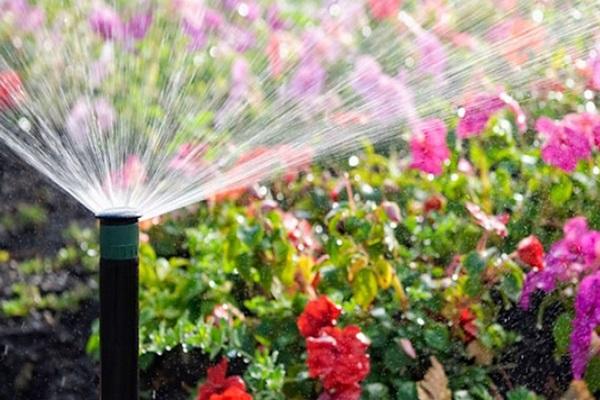
Bushes should be periodically spud and add a small amount of fresh soil to them. This is due to the close location of the roots to the soil surface. When watering or raining, roots and tubers are exposed.
Safe wintering of the plant
After the end of the flowering culture and the leaves fall, it is recommended to cut off the ground part. After the garden bed, it is worth mulching with peat, compost, dry leaves and spruce branches. A layer of mulch - 10-15 centimeters.
It is forbidden to use straw as mulch. In this material rodents start, which in winter damage the roots of the plant. In the absence of severe frosts, liatris may well survive the winter without shelter.
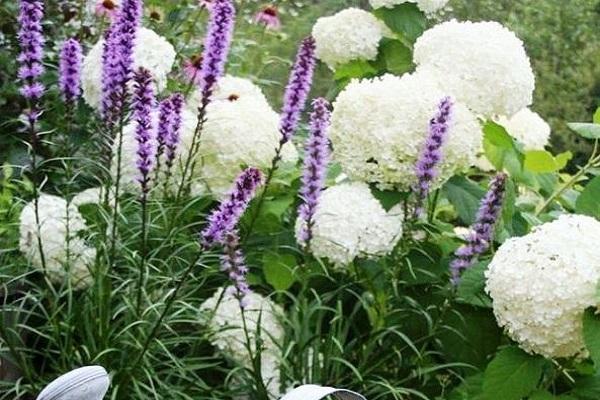
Plant transplant
It is worth replanting the plant in the fall. It is recommended to combine this procedure with tuber division. This manipulation is carried out every 3-4 years. To do this, the liatris needs to be dug up, the bush must be carefully divided. As a result, all fragments should have a root collar. It is important that it contains tubers.
After the formed elements are planted in the holes. In this case, you need to maintain a distance of 25-40 centimeters. The tubers are deepened into the soil by 8-15 centimeters. The third part of the hole should be covered with humus. After that, it is supplemented with garden soil and tamped. Then it is recommended to water the beds and mulch with humus.
Liatrice pests and diseases
Liatris is resistant to disease. Dangerous insects that can damage the culture include bears and snails. To cope with them, it is worth using the folk method.
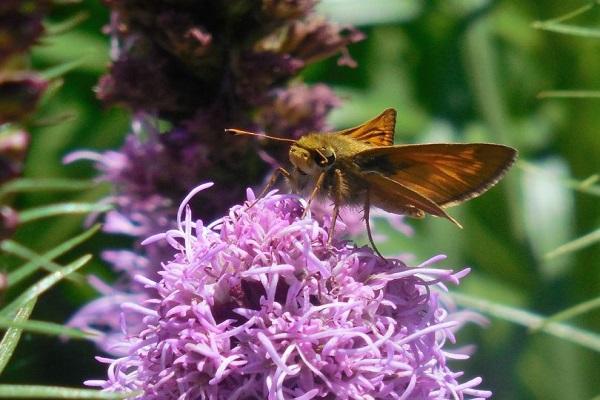
For this, it is recommended to take a bottle and fill it with 100 milliliters of beer. Then dig into the ground at an angle of 45 degrees.As a result, the neck should be a few centimeters below the ground - in a small depression.
The aroma of the beer will attract pests, so they will fall into the trap. The only difficulty with this method is the need to constantly replace the beer in the bait.
Waterlogging of the soil leads to crop rot. In this case, all decaying areas should be cut off, after which the culture should be treated with a fungicide. If the groundwater is close or the soil composition is unsuitable, the site for the plant should be changed.

Breeding methods
At home, it is permissible to reproduce liatris in different ways:
- Seeds. It is permissible to sow them in the first half of spring. The seeds of the culture are frost-resistant. Before planting, the material should be left in a humate solution. This must be done for 8-10 hours. Then dig up the soil with the addition of humus. 1 bucket of this substance is added to 1 square meter of soil. Then the seeds should be poured into the grooves and covered with earth. Planting depth is 1-1.5 centimeters. With this method of growing, liatris will acquire the necessary power only for 2-3 years.
- Tubers. If there is a plant more than 3 years old, it is permissible to take tubers from the roots. They should be 2 centimeters in diameter. Planting material should be placed in a hole measuring 8-12 centimeters. Previously, it is recommended to fill it with humus by a third. Before planting, inspect the tubers and find grooves in them. This part should be on top. The first shoots will come out of it. This will happen 1 month after planting.
- By division. It is permissible to propagate a shrub by division. For this, fresh shoots should be separated from an adult plant. They need to be taken with part of the root system. They must have a strong root collar and tubers. Prepared shoots are planted in holes, keeping a distance of 25-40 centimeters. Transplanting the culture is allowed in early spring or late autumn. The manipulation is performed with an interval of 3-4 years.
To grow powerful and viable plants from seeds, experts advise planting crops in greenhouses.
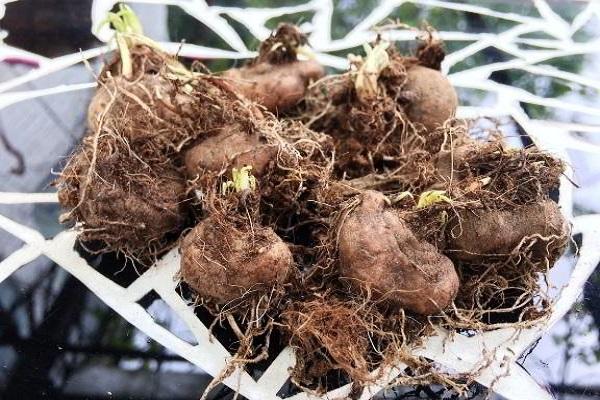
Use in landscape design
Liatris is often used in landscape design. This culture combines well with plants that like loose soil and lots of sun. The shrub looks great with wildflowers.
To create a harmonious composition, it is important to choose your neighbors correctly. For this, it is worth considering the shade, flowering time, height of crops. White or purple liatris is in perfect harmony with daylily. It is advisable to choose red-orange tones. Also, yellow evening primrose will organically fit into the composition.
If you plan to break a large-scale flower garden, it is worth combining white liatris and yellow monards. They can also be red. To create rockeries, it is worth using the Kobold variety. In height, it does not exceed 40 centimeters and has bright purple-purple inflorescences. They will certainly attract attention.
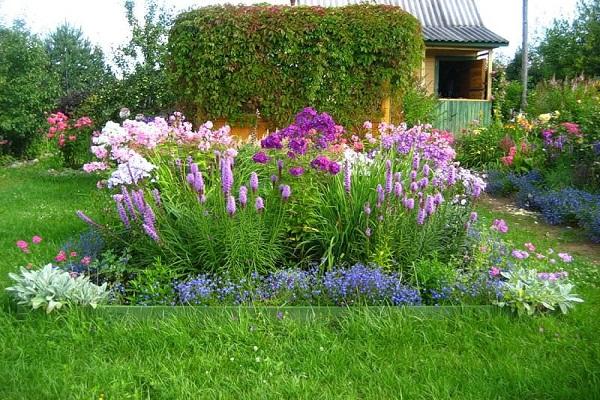
Liatris is planted in flower beds in the area of house buildings. Flowers are also often used by florists when forming wedding bouquets. Liatris combines perfectly with flowers such as lupine, violets, irises. It can also be combined with carnation, daylily, delphinium.
Liatris is a beautiful plant that is easy to care for and resistant to pests and diseases. To grow a viable culture, you need to follow the ground rules. The plant should be provided with competent watering and fertilization.
